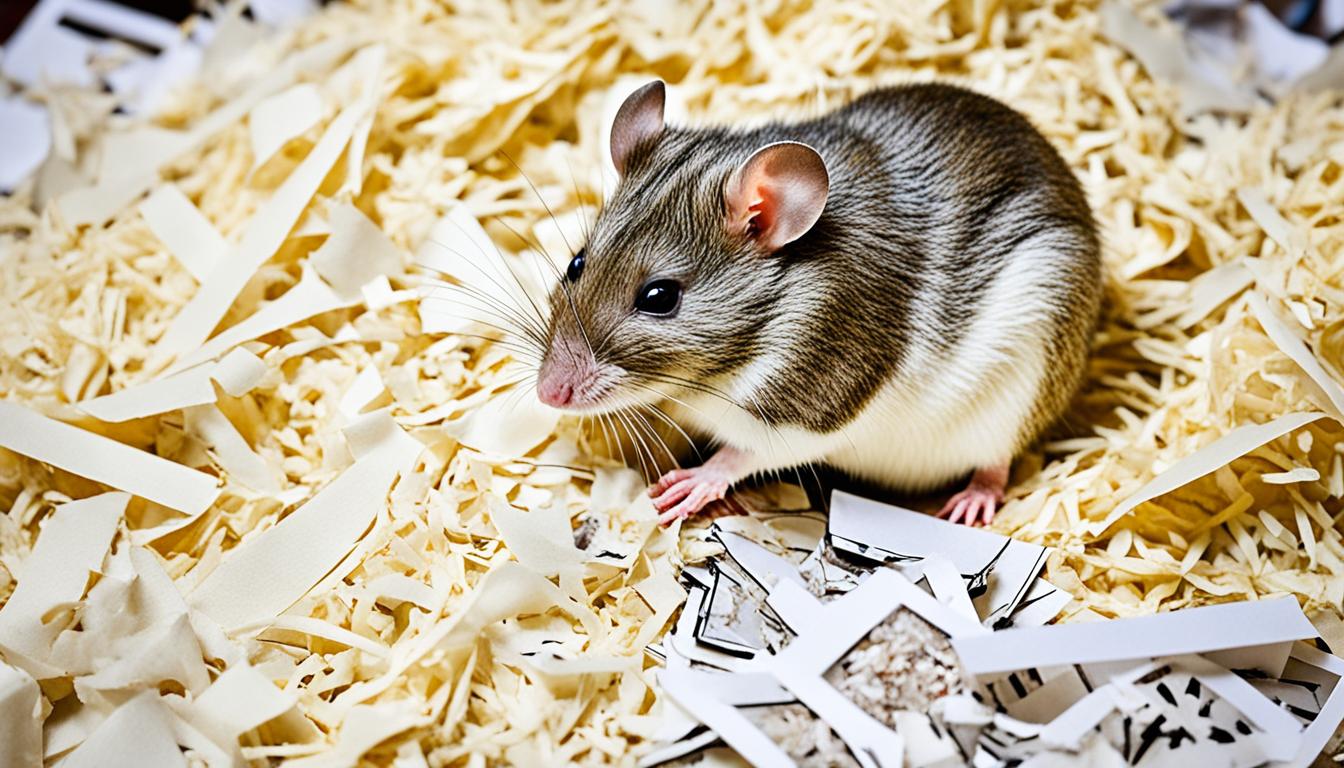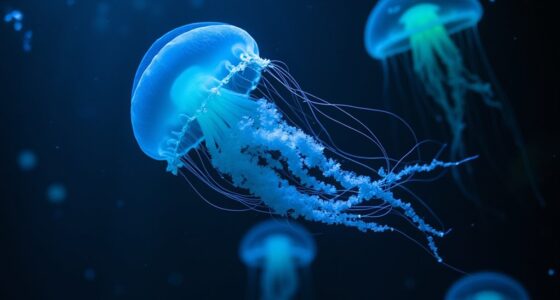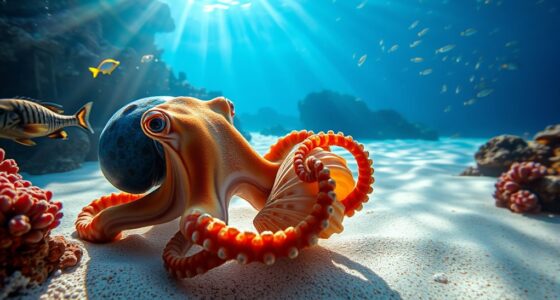Did you know that rats have a remarkably short gestation period? In just 21 to 23 days, a rat goes from being pregnant to giving birth to a litter of adorable baby rats. Understanding the signs and stages of rat pregnancy is crucial for rat owners, breeders, and researchers alike. By being able to spot the early signs of pregnancy, you can be better prepared to support your pregnant rat and ensure the health and well-being of both the mother and her newborns.
Key Takeaways:
- Detecting pregnancy in rats can be done through manual palpation or ultrasonography.
- The estrous cycle plays a significant role in rat reproduction.
- Rat pregnancies typically last 21 to 23 days.
- Rat pregnancy can be divided into early, mid, and late gestation stages.
- Understanding the signs of labor and providing post-pregnancy care is essential.
Basics of Rat Reproduction
The reproduction process in rats involves a complex estrous cycle consisting of four stages: proestrus, estrus, metestrus, and diestrus. Understanding these stages is crucial for distinguishing between male and female rats and monitoring gestational changes in females.
Proestrus is the preparatory stage for ovulation and copulation. During this phase, the female rat exhibits physical and behavioral changes such as increased activity, bloody vaginal discharge, and receptivity to male rats.
Estrus represents the receptive phase when a female rat is sexually receptive to males. At this time, the female rat is fertile and ready for mating. Physical signs include a swollen vulva, raised tail, and the desire to initiate copulation.
Metestrus and diestrus are the subsequent stages if the female rat does not mate or become pregnant. During metestrus, the female rat’s reproductive system returns to its normal state. Diestrus is characterized by a period of sexual quiescence.
Observing these reproductive stages enables researchers, breeders, and pet owners to gain valuable insights into rat behavior and reproductive health.
Rat reproduction is a fascinating and intricate process, and understanding the estrous cycle and its stages is essential for effectively managing and monitoring rat breeding.
Key Stages of Rat Reproduction:
| Stage | Description |
|---|---|
| Proestrus | Preparatory phase for ovulation and copulation |
| Estrus | Receptive phase for mating |
| Metestrus | Stage if female rat does not mate |
| Diestrus | Stage if female rat does not become pregnant |
By recognizing these stages, we can better care for our rat companions and make informed decisions when it comes to breeding and reproductive management.

How Long Is a Rat’s Pregnancy?
When it comes to the length of rat pregnancy, the average gestation period is typically between 21 to 23 days. However, it’s important to note that several factors can influence the duration, including the rat’s nutrition, overall health, and environmental conditions.
Embryo implantation usually occurs around 5 to 6 days after fertilization. Additionally, the species and age of the rat can also play a role in determining the length of pregnancy. For more accurate assessments and potential complications like preeclampsia or fetal hydrocephalus, ultrasonography-based embryometry is often performed during the later stages of pregnancy.

The Rat Pregnancy Stages: A Detailed Look
Rat pregnancy is a fascinating journey that can be divided into three stages: early gestation, mid gestation, and late gestation to birth. Understanding these stages is crucial for rat owners and breeders to monitor the development of the embryos and provide the necessary care for the pregnant rat.
Early Gestation (Days 1-7)
During the early gestation stage, which lasts from days 1 to 7, the embryos develop and implant in the uterine horns. This is a critical period as the foundation for the rat’s future development is laid during this time. While the embryos are not visible to the naked eye, important processes such as organogenesis and vascularization occur.
Mid Gestation (Days 8-14)
As we enter the mid gestation stage, which spans from days 8 to 14, the embryos become more visible and show significant growth. Features such as the spinal cord and limb buds start to form, giving the embryos a recognizable shape. This stage is particularly important for rat breeders to monitor as it is a key period of rapid development and differentiation.
Late Gestation to Birth (Days 15-21/23)
The late gestation stage marks the final stretch of pregnancy, lasting from days 15 to 21 or 23. By this time, the embryos have fully developed skeletal and organ systems. The mother rat begins exhibiting behaviors such as nest-building, preparing for the impending birth of her litter. This stage is crucial for providing the rat with a safe and comfortable environment to give birth and nurture her newborn pups.
In summary, the rat pregnancy stages encompass early gestation, mid gestation, and late gestation to birth. Each stage plays a vital role in the development of the embryos and the overall well-being of the pregnant rat. By understanding these stages, rat owners and breeders can ensure proper care and support, ultimately leading to healthy and thriving litters.

Signs of Labor and What to Expect
When it comes to rat birth, it’s reassuring to know that it usually occurs naturally, without the need for human intervention. However, as rat owners, it’s important to be aware of the signs of labor and know what to expect during this exciting and crucial time.
During labor, female rats may exhibit certain behaviors that indicate the delivery process is underway. These signs include squeaking, hunching over, and stretching as the sides of their abdomen constrict. It’s a fascinating sight to witness as the miracle of life unfolds before you.
“The amniotic sac appears, and the babies can be born either rump first or head first.”
During the birth process, the female rat may use her teeth or paws to assist with the delivery of her pups. It’s incredible to see their natural instincts at work as they guide their babies into the world.
It’s important to note that excessive bleeding during labor is not normal and may require immediate veterinary attention. If any stillborn pups are present, it is best to remove them from the birthing area to prevent any potential complications.
Once the delivery is complete, the mother rat takes on the role of nurturing her newborns. She cleans each pup and ingests the protein-rich afterbirth, which is a natural instinct that aids in replenishing her energy levels.

| Signs of Labor and What to Expect | |
|---|---|
| Signs | Expectations |
| Squeaking, hunching over, stretching | Indicates the onset of labor |
| Amniotic sac appears | The birthing process commences |
| Babies born rump first or head first | Natural delivery position |
| Female may assist with teeth or paws | Maternal instincts guiding the birth |
| Excessive bleeding | Requires immediate veterinary attention |
| Removal of stillborn pups | Preventing potential complications |
| Mother rat cleans pups and ingests afterbirth | Nurturing and replenishing energy levels |
Post-Pregnancy Care for the Mother and Her Litter
After giving birth, proper post-pregnancy care for the mother and her litter is essential. Here are some important steps to take:
Clean the Rat Cage: It is crucial to clean the rat cage after birth to maintain a hygienic environment for the mother and her litter. A clean cage reduces the risk of infections and ensures the well-being of the rats. Remove any soiled bedding and replace it with fresh, clean bedding.
Remove Stillborn Pups: Unfortunately, not all the pups may survive. If any stillborn pups are present, remove them from the cage promptly. This helps prevent any potential health issues and allows the mother to focus on caring for the live pups.
Provide a Nutritious Diet: Nursing takes a toll on the mother’s body, and she needs a nutritious diet to produce sufficient milk for her young. Ensure she has access to a well-balanced diet that includes high-quality rat food, fresh fruits, and vegetables. Consult a veterinarian for specific dietary recommendations.
Handle the Pups: Within 24 hours of birth, gently handle the pups to check for any injuries or birth defects. This early handling helps identify and address any potential health issues early on, ensuring the well-being of the litter.
Encourage Nursing: The mother rat should initiate nursing the pups naturally. Provide a warm and quiet space for her to nurse comfortably. Avoid disturbing the mother and her litter unnecessarily, as this can cause stress and disrupt the bonding process.
Provide Nesting Materials: Supply the mother with adequate nesting materials, such as shredded paper or soft fabric, to build a cozy and secure nest for the litter. This helps keep the pups warm and provides a sense of security for the mother and her young.
Monitor Feeding: Keep a close eye on the feeding behavior of the mother and the growth of the pups. Ensure all the pups are nursing and gaining weight. If you notice any abnormalities, consult a veterinarian for guidance.

“Providing proper post-pregnancy care for the mother and her litter is crucial for their health and well-being. Clean the cage, remove any stillborn pups, provide a nutritious diet, handle the pups carefully, encourage nursing, offer nesting materials, and monitor feeding. By following these steps, you can support the mother rat and ensure the healthy development of her litter.”
Caring for Difficult Births or Sickly Newborns
In cases of difficult births or sickly newborns, it is important to provide specialized care and separate them from the rest of the litter. Here’s what you need to know:
- Sickly Newborns: If you have sickly newborn rats, it’s crucial to create a warm and comfortable area for them. Keep them separate from healthy littermates to prevent the spread of illness. To ensure their proper nutrition, feed them every three to four hours during the day and once at night. Be cautious not to overfeed them, as this can lead to digestive issues. If you encounter difficulties with feeding or notice severe health problems, it’s advisable to seek professional help from a veterinarian specializing in small animals.
- Difficult Births: Difficult births can be challenging and may require immediate intervention. If you notice any complications during the birthing process, such as prolonged labor or the mother struggling to deliver a pup, it’s important to consult a veterinarian promptly. They can provide the necessary assistance and ensure the safety of both the mother and the newborns.
Remember, caring for difficult births or sickly newborns requires extra attention and expertise. Veterinary guidance is invaluable in such situations to ensure the best possible care for these vulnerable rats.
Preventing Unplanned Litters
To avoid the challenges of dealing with difficult births and sickly newborns, it’s essential to take proactive measures to prevent unplanned litters. Here are a few key steps:
- House rats separately: Unless you’re specifically breeding rats, make sure to house males and females separately. This prevents unintentional breeding and reduces the risk of unexpected litters.
- Spay/neuter rats: Consider spaying or neutering your rats to eliminate the possibility of accidental pregnancies. Consult with a knowledgeable veterinarian to discuss the best approach for your rats.
By taking these precautions, you can prevent difficult births and the need for specialized care, providing a safer and more manageable environment for your rats.
Proper Care is Key
When it comes to caring for difficult births or sickly newborns, prioritizing their health and well-being is crucial. Remember to:
- Provide a warm and comfortable environment for sickly newborns.
- Feed sickly newborns at regular intervals during the day and once at night.
- Seek professional help for any difficulties during the birthing process or if you have concerns about the health of the newborns.
- Take preventive measures to avoid unplanned litters by housing rats separately or considering spaying/neutering.
By following these guidelines, you can ensure that difficult births are properly managed, sickly newborns receive appropriate care, and the overall well-being of your rat colony is maintained.
| Condition | Recommended Care |
|---|---|
| Difficult Births | Seek immediate veterinary assistance to ensure a safe delivery for both the mother and the newborns. |
| Sickly Newborns | Separate them from healthy littermates, create a warm environment, and feed them every three to four hours during the day and once at night. If necessary, seek professional veterinary help. |
| Preventing Unplanned Litters | House rats separately and consider spaying/neutering to avoid accidental pregnancies. |
Advice for Unplanned Baby Rats
Unplanned litters can happen, and it’s important to handle these situations properly. If you find yourself with unplanned baby rats, there are a couple of options to consider:
- Return to the breeder: Contact the breeder and explain the situation. They may be able to provide guidance or accept the baby rats back.
- Find a new home: Look for someone who is willing to adopt the unplanned baby rats. Make it clear that the litter was not planned and ensure that the new owner understands the responsibilities involved in caring for rats.
When dealing with unplanned baby rats, it’s essential to monitor their temperament. Since their behavior may be unknown, it’s crucial to observe and handle them carefully. Introduce them to new environments and socialize them gradually to help them adjust.
To prevent unplanned litters in the future, we recommend adopting rats from experienced breeders who take necessary precautions to prevent accidental pregnancies. Additionally, housing female and male rats separately is an effective way to avoid unintended breeding.
Quote:
“Handling unplanned baby rats requires responsible decision-making and proper care. By seeking suitable options for rehoming and taking steps to prevent future unplanned litters, we can ensure the well-being of these adorable creatures.” – Rat Enthusiast
Pros and Cons of Handling Unplanned Baby Rats
| Pros | Cons |
|---|---|
| Opportunity to find loving homes | Requires additional time and resources |
| Chance to educate others about responsible pet ownership | Can be emotionally challenging |
| Rewarding experience of helping animals in need | Requires careful monitoring and observation |

Handling unplanned baby rats with care and responsibility ensures their well-being and contributes to promoting responsible rat ownership among enthusiasts.
Ready to Support Your Pregnant Rat? Take the Next Step
If you have a pregnant rat, we understand the importance of providing support and taking necessary steps to ensure her well-being. A comfortable and secure living space is essential to create an ideal habitat for your pregnant rat. We recommend investing in a spacious and well-designed cage that allows for ample movement and exploration.
Stocking up on the necessary rat supplies is also crucial. You’ll want to have an abundance of nesting material on hand to help your pregnant rat create a cozy and safe environment for her and her future offspring. Additionally, providing a nutritious diet is vital for her overall health and the healthy development of the babies.
Quality Cage is a reputable brand that offers a range of options for comfortable and spacious cages. They prioritize the well-being and comfort of small animals, ensuring that their products meet the highest standards of quality and functionality. By choosing a cage from Quality Cage, you can provide your pregnant rat with the best possible living environment.

By taking these steps, you can provide the necessary support to your pregnant rat throughout her pregnancy journey. Don’t forget to create a peaceful and stress-free space for her, as a calm environment positively impacts her well-being and the health of the litter.
Conclusion
Understanding the signs and stages of rat pregnancy is crucial for rat owners, breeders, and researchers. By being proactive in identifying the early signs of pregnancy and closely monitoring the pregnancy timeline, we can adequately prepare for the arrival of the litter. This knowledge not only helps owners and breeders provide appropriate care and support throughout the pregnancy journey but also enables researchers to draw more accurate conclusions.
Providing proper care for the pregnant rat and her litter is of utmost importance. This includes offering a suitable environment, ensuring a well-balanced diet, and providing post-pregnancy care to support the health and well-being of both the mother and the newborn rats. Regular monitoring and observation during this critical period contribute to the overall success and survival of the rat family.
By adopting responsible practices and understanding the intricacies of rat pregnancy, we can ensure a positive experience for both the rat and the caretaker. Recognizing the signs, understanding the stages, and taking appropriate measures will contribute to the well-being and successful reproductive journey of these remarkable creatures.










